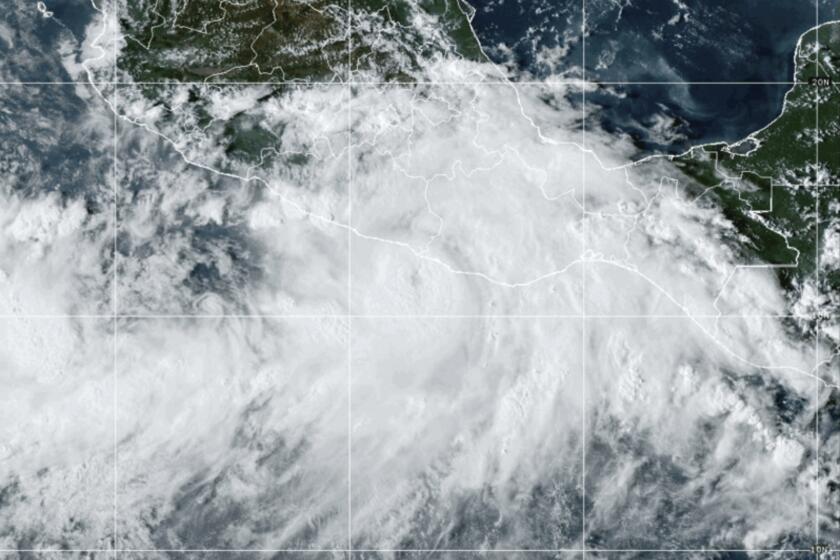Roving killers on the loose
They roam large parcels of the Pacific in small hunting parties, working together, relying on stealth and striking savagely and without notice. They’re killer whales, and they’re on the loose off Southland shores.
Ken Kurtis, co-owner of Reef Seekers Dive Co. in Beverly Hills, was coming back from a recent dive trip off Santa Barbara Island, where he had seen and photographed a wolf eel -- a rare sighting in Southland waters -- and thought his day had been made. But then four killer whales emerged from the depths of the channel.
“I’d been diving out here for 25 years, and although I’ve heard stories of people spotting orcas, I’ve never seen them in the water,” Kurtis said in a newsletter he e-mails to clients.
The orcas included a large male that allowed the boat to approach within about 50 feet. Its dorsal fin poked skyward as the mammal broke the surface, revealing the gray “saddle” marking behind the fin. Deckhand Terry May took photos sent with Kurtis’ newsletter.
I took one look at the close-up and immediately forwarded it to Alisa Schulman-Janiger, a researcher who tracks orcas to learn more about their movements and behavior. She recognized it as CA 52, a male believed to be about 32 years old and measuring 26 to 28 feet.
Killer whales are identifiable by distinct markings on their fins and saddles. This one was first documented in 1992 off Anacapa Island, and it has been roving vast tracts of ocean ever since.
It has been photographed as far north as Tofino Bay, British Columbia, and the sighting by Kurtis and his dive clients -- six miles southeast of Santa Barbara Island, on a line headed toward Long Beach -- pinpointed its southernmost position. This orca is part of what’s known as a “transient” pod. Unlike members of “offshore” and “resident” pods, transients travel in small groups and rely on stealth to ambush their prey. When it was photographed in 1997, off Monterey, it was feeding on a gray whale calf that had been killed during the night. (Gray whales are often stalked in the Monterey marine canyon area as they migrate to the Bering Sea with calves born in the lagoons of Baja California.) There were as many as 15 dining on the calf by the time a group aboard a whale-watching boat arrived after dawn.
“Once a kill is made, they put out these loud vocalizations, like war hoots, calling the others in,” Schulman-Janiger explained.
Transient orcas are carnivores -- offshore and resident pods prey primarily on fish and squid -- and they can find plenty on the menu off the Channel Islands. CA 52 was photographed in 2000 off Santa Rosa Island, after it had snacked on a harbor seal. Schulman-Janiger personally saw the killer whale last April off Monterey, while working with fellow researcher Nancy Black, who runs Monterey Bay Whalewatch.
Black sighted it Oct. 3 off Monterey, in a pack of more than 25, indicating that another feeding had just occurred. Today Schulman-Janiger has watchdogs aboard various fishing boats, keeping their eyes peeled for orcas.
Kurtis, meanwhile, is planning more dive trips, knowing only to expect the unexpected. “Scuba diving is like the world’s greatest scavenger hunt,” he said in an interview, “because you never know what you’re going to find.”
To e-mail Pete Thomas or read his previous Fair Game columns, go to www.latimes.com/petethomas.
More to Read
Sign up for Essential California
The most important California stories and recommendations in your inbox every morning.
You may occasionally receive promotional content from the Los Angeles Times.










